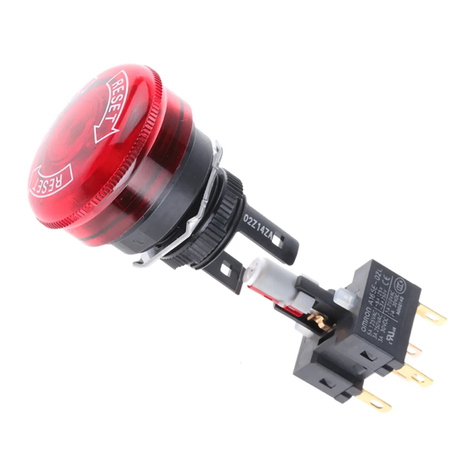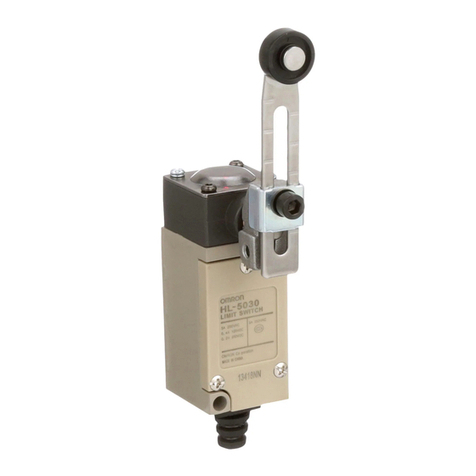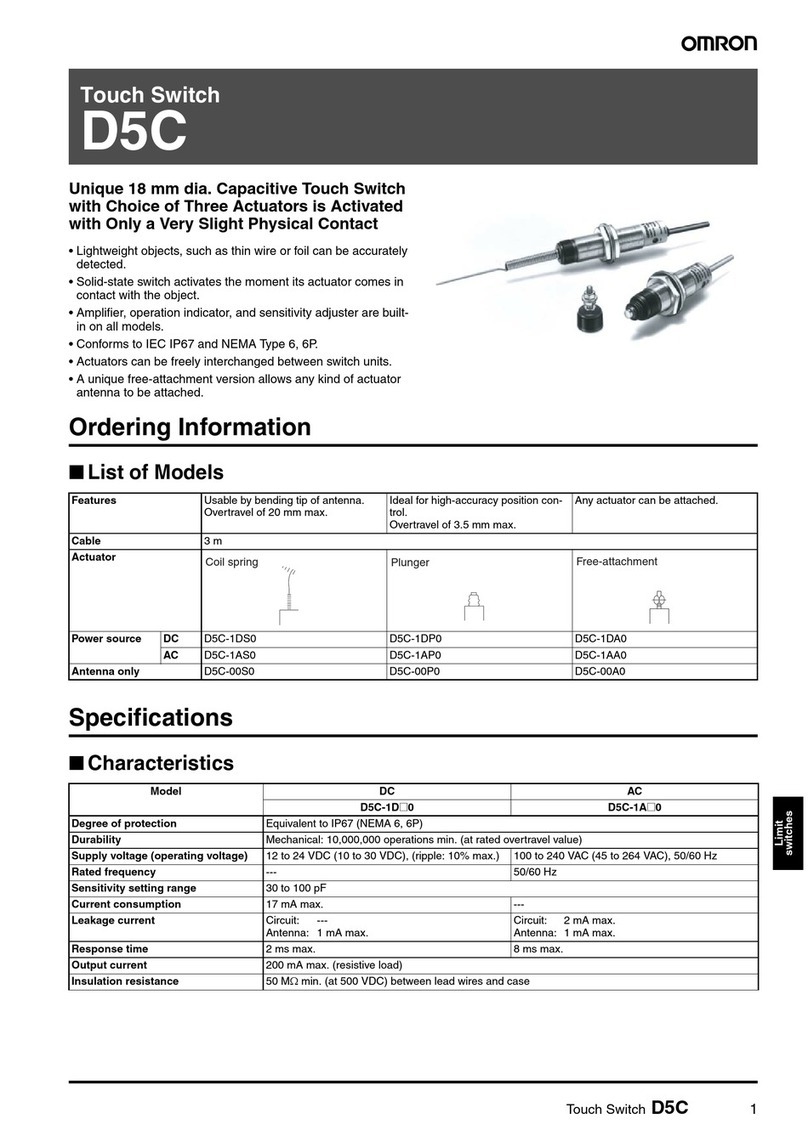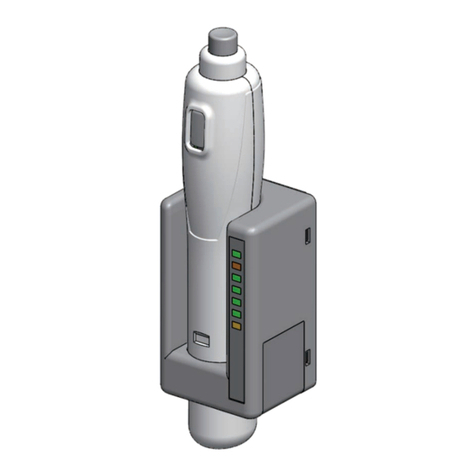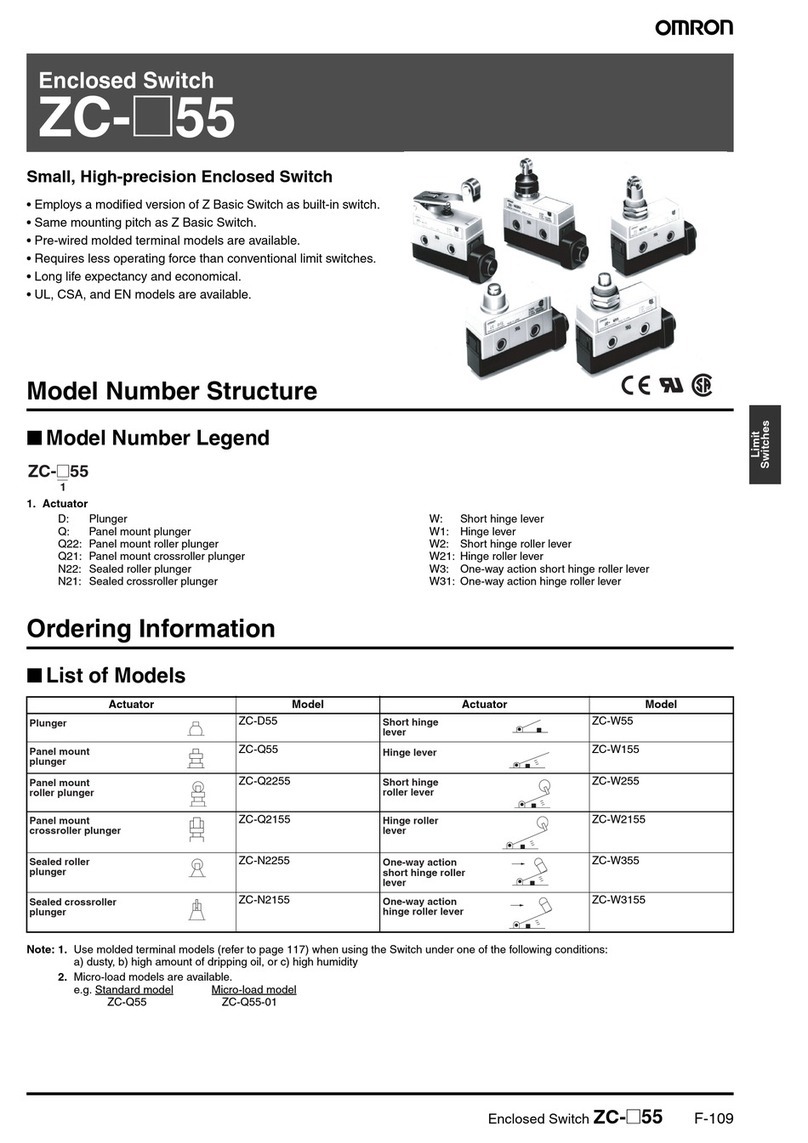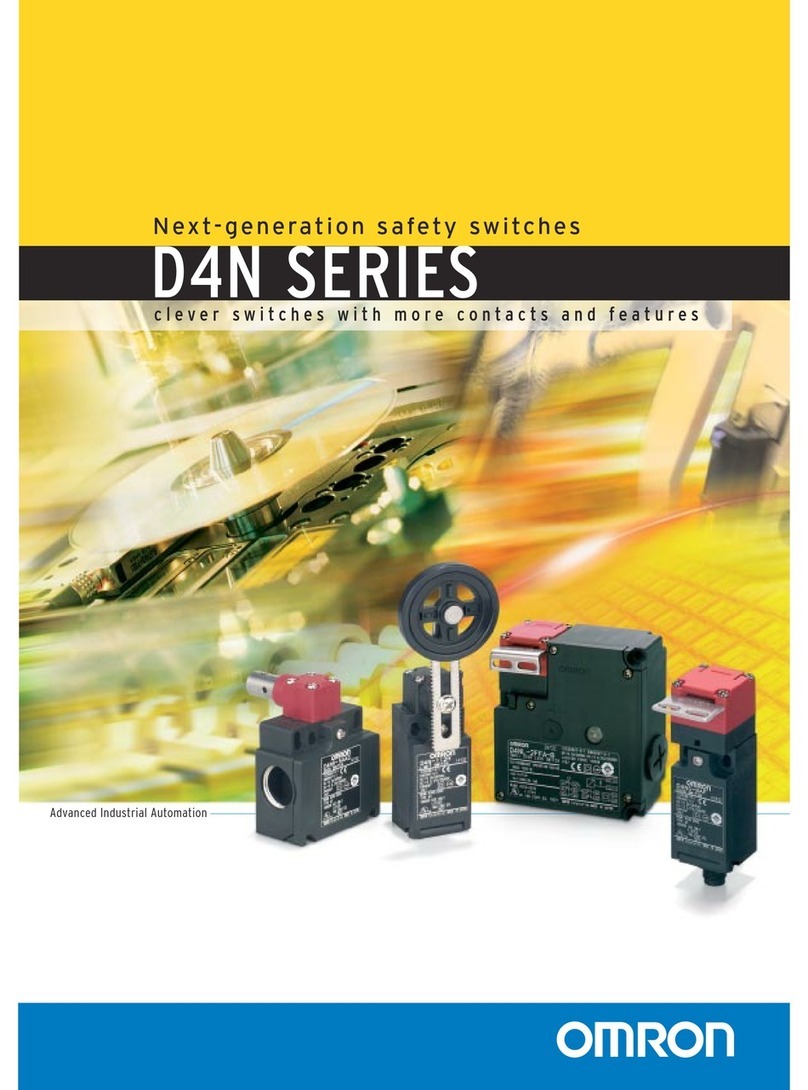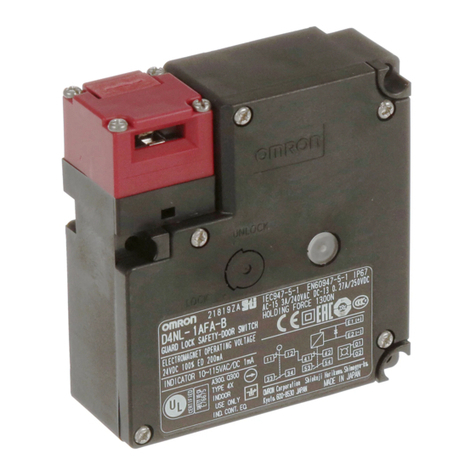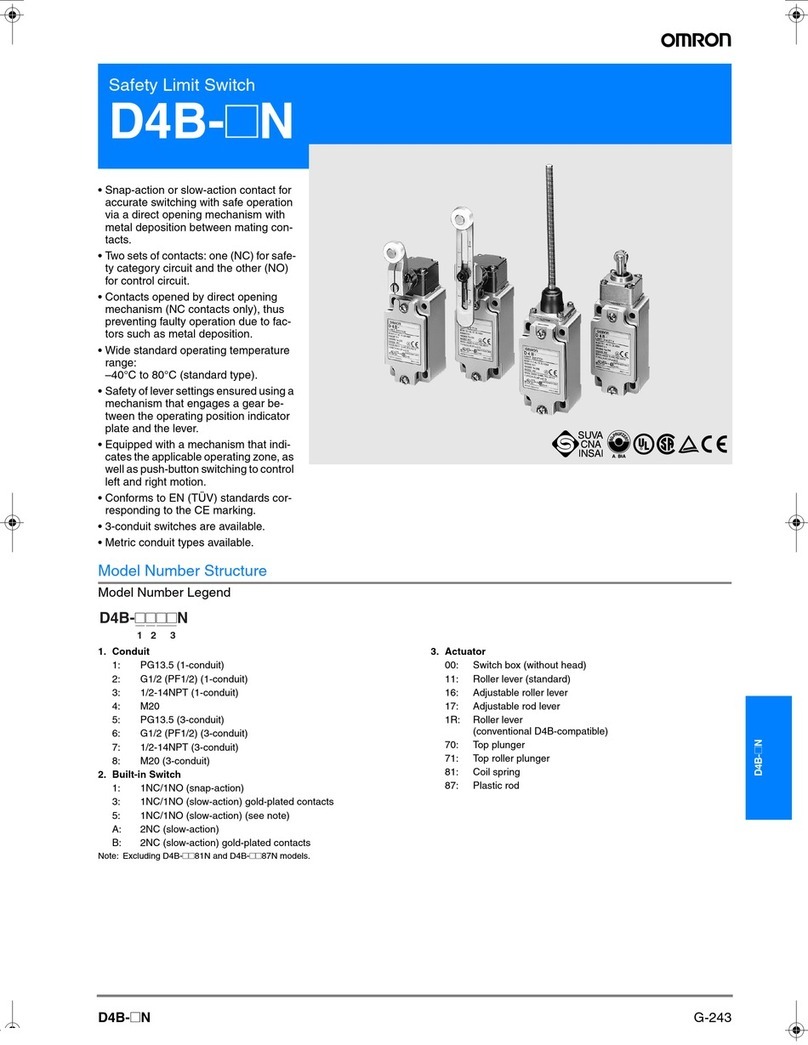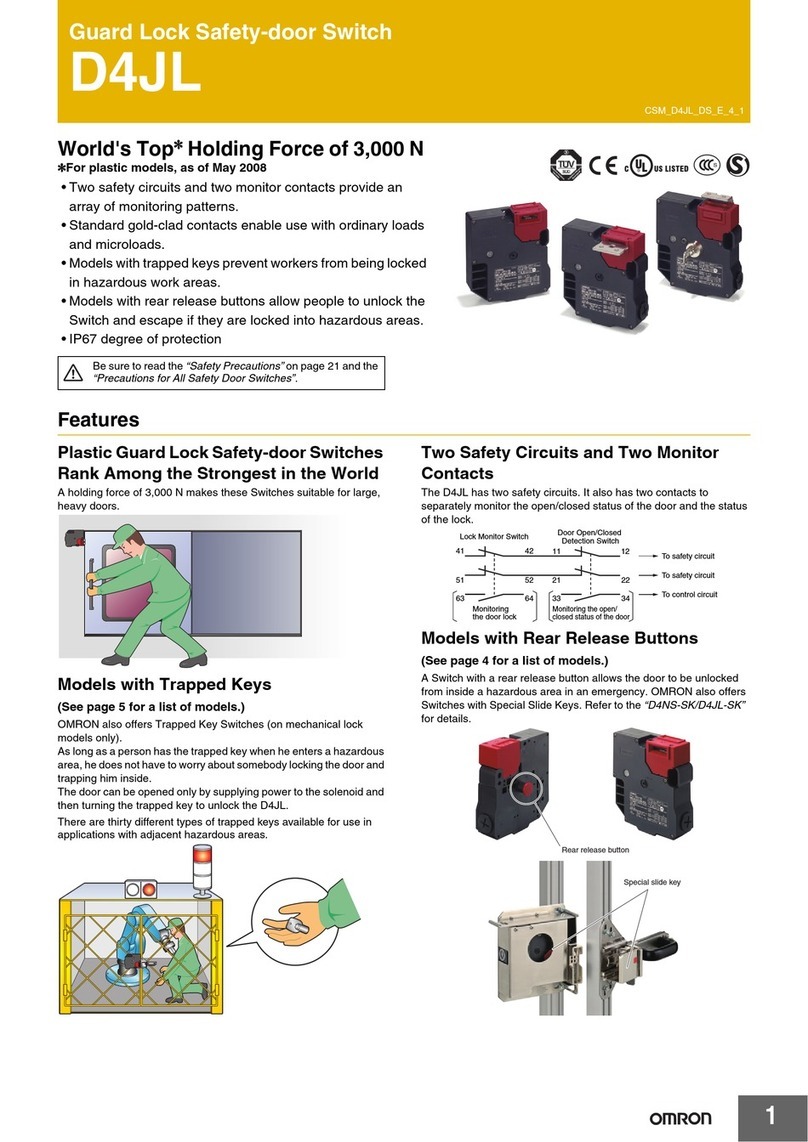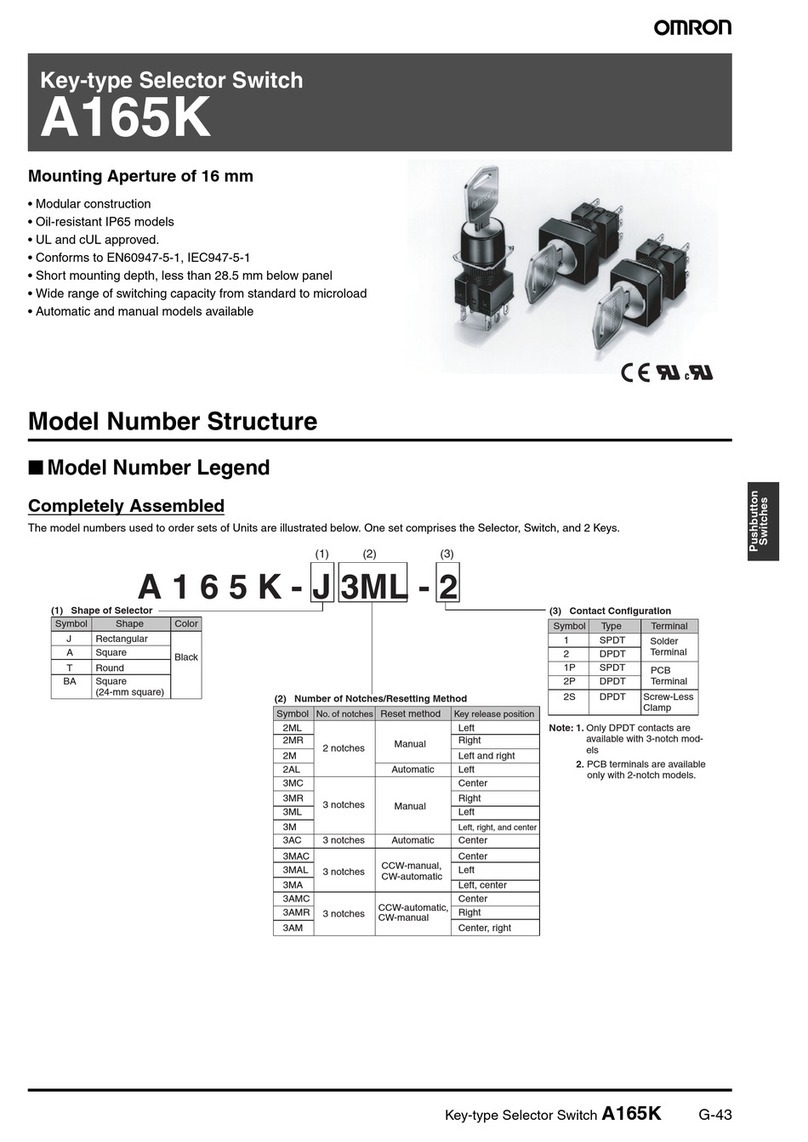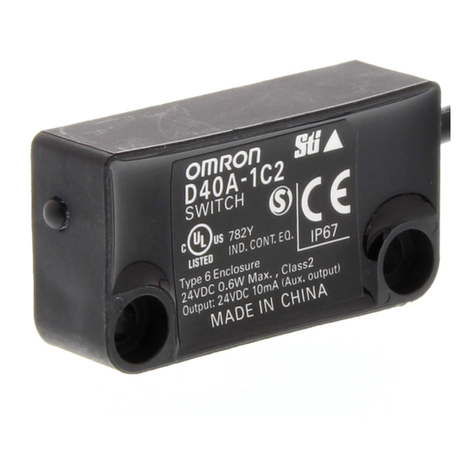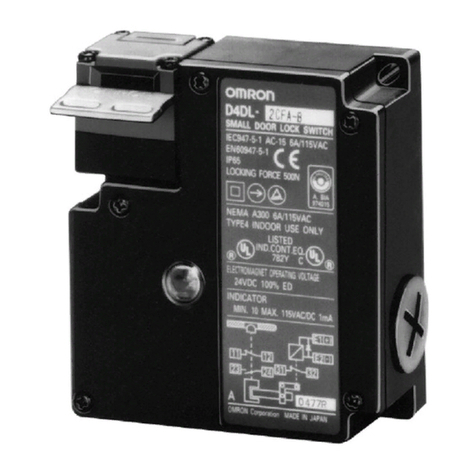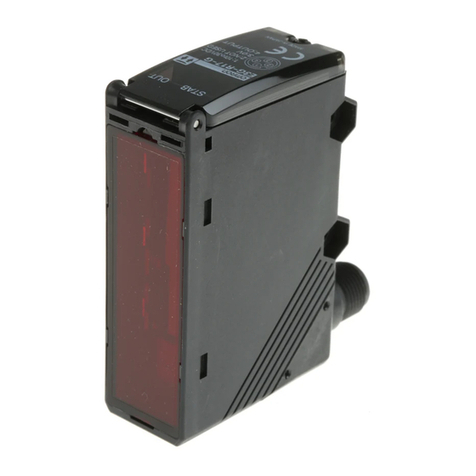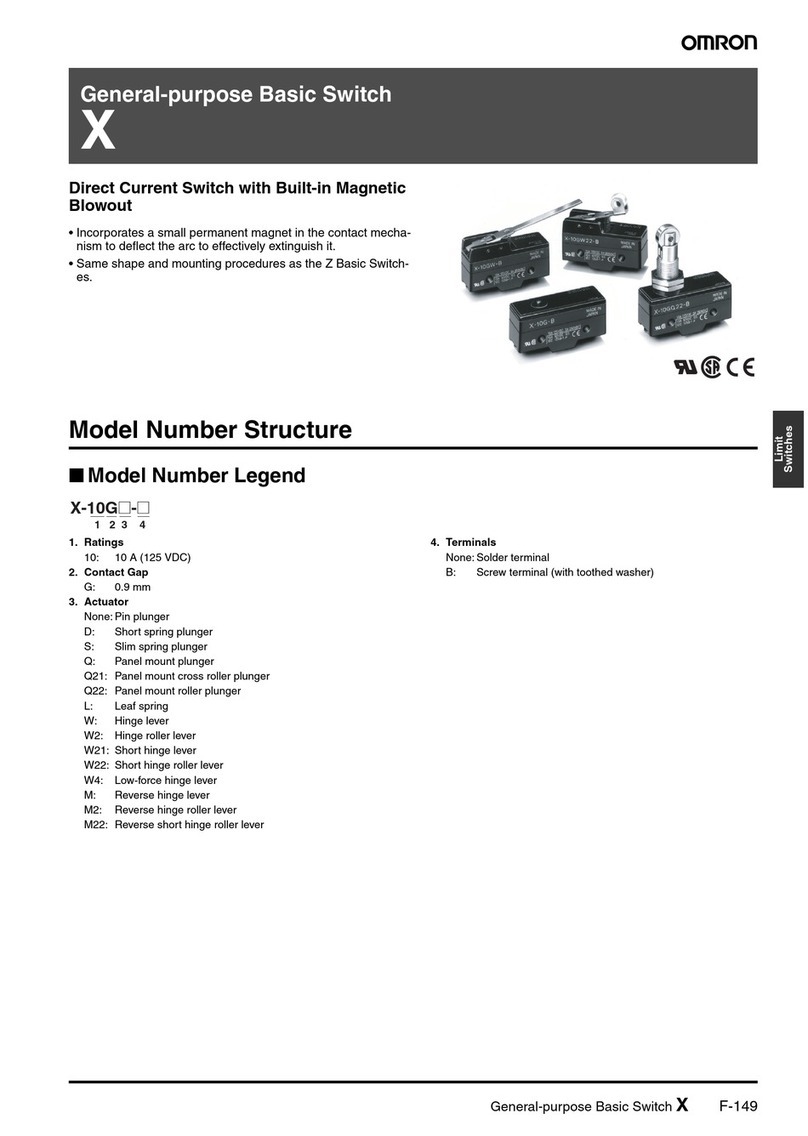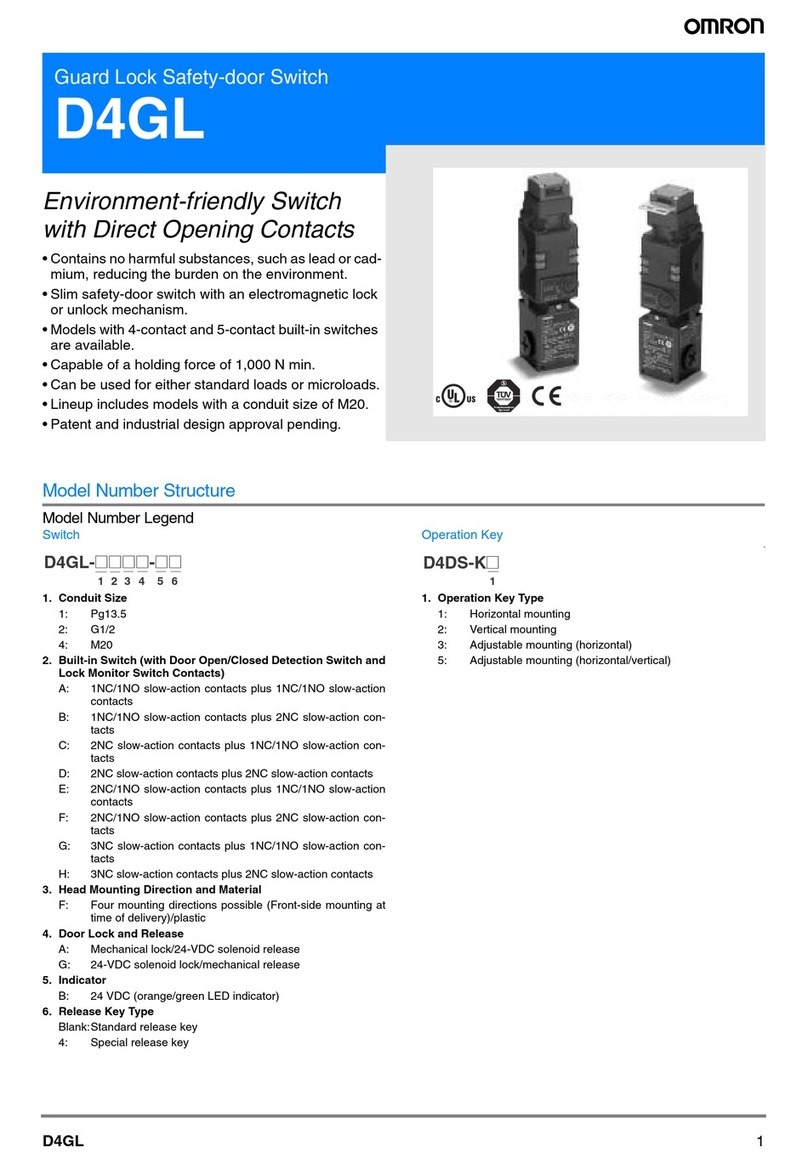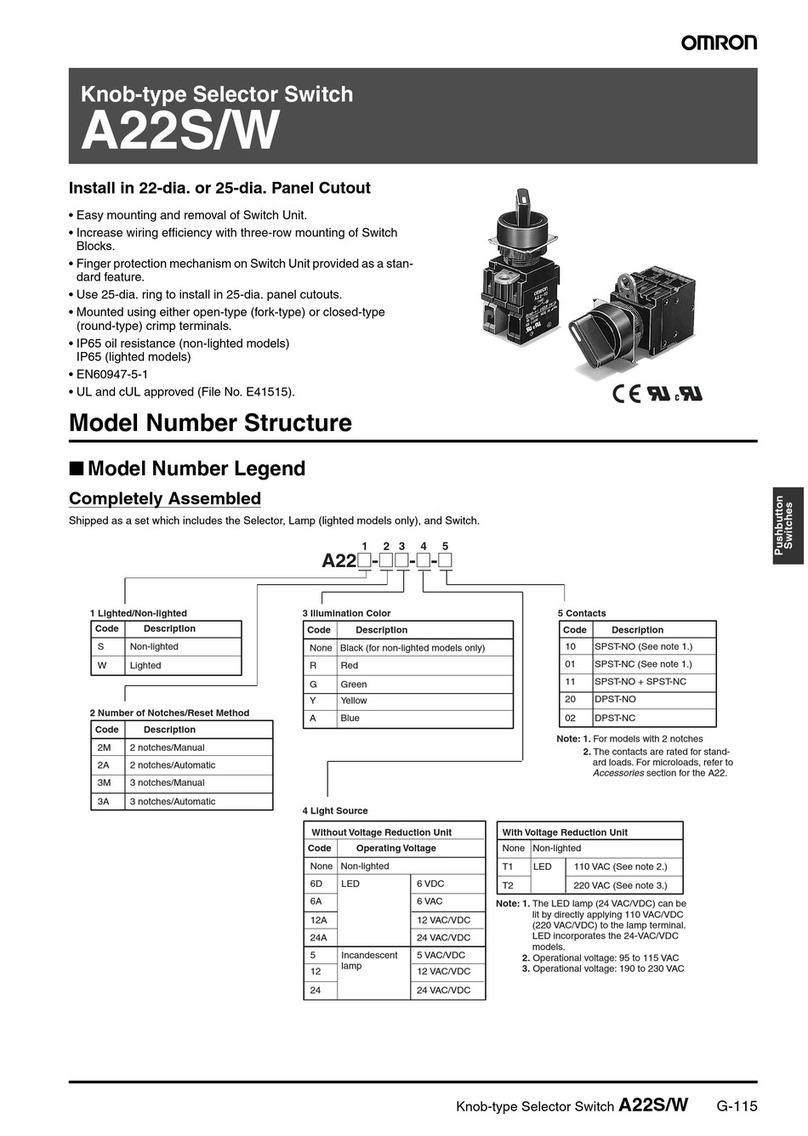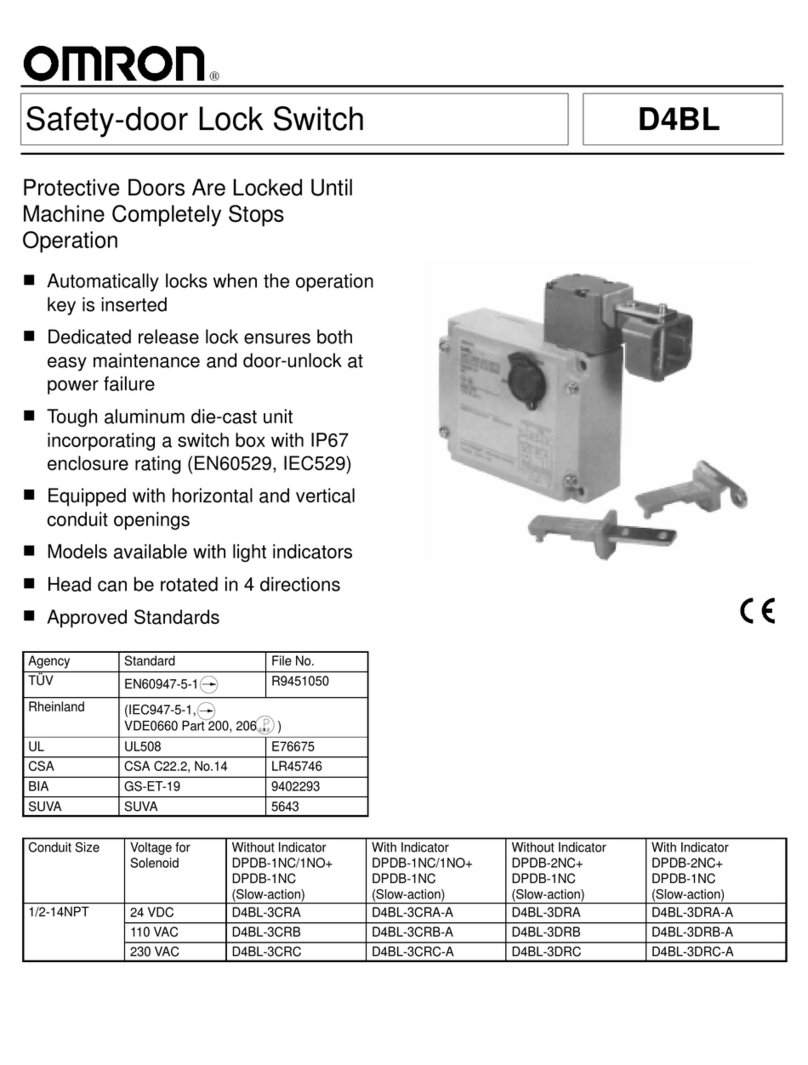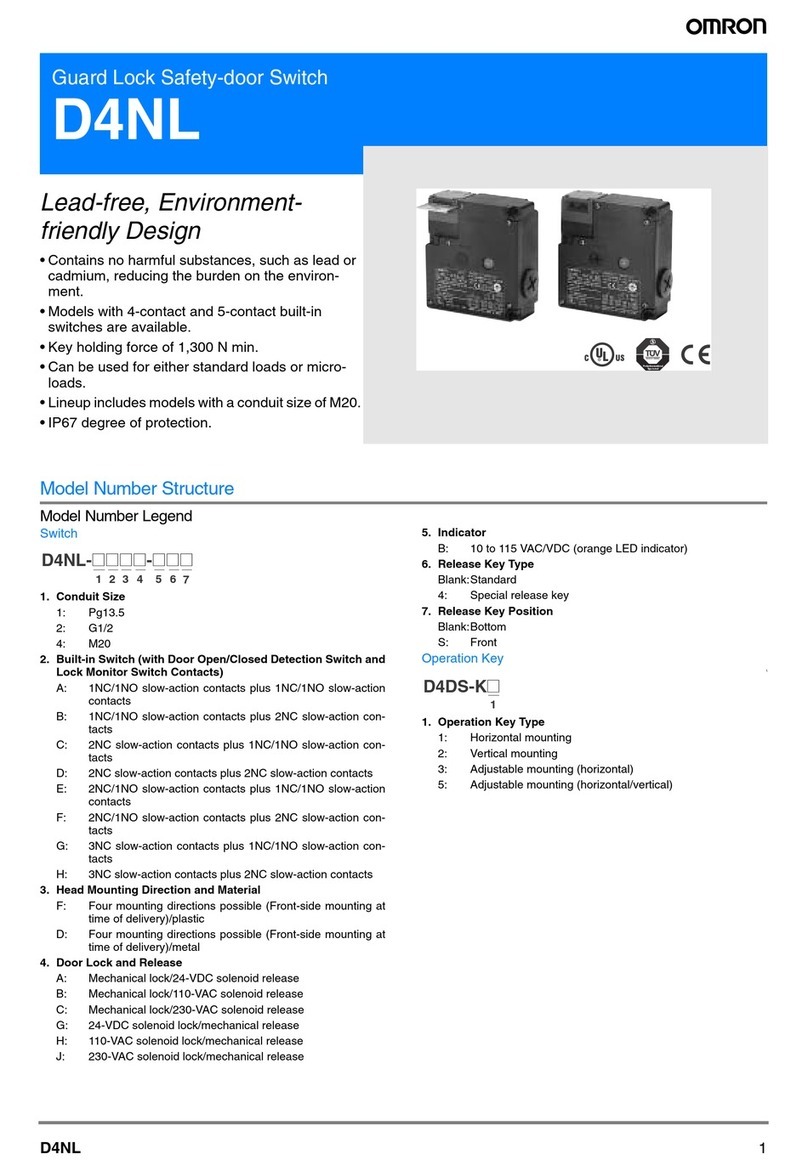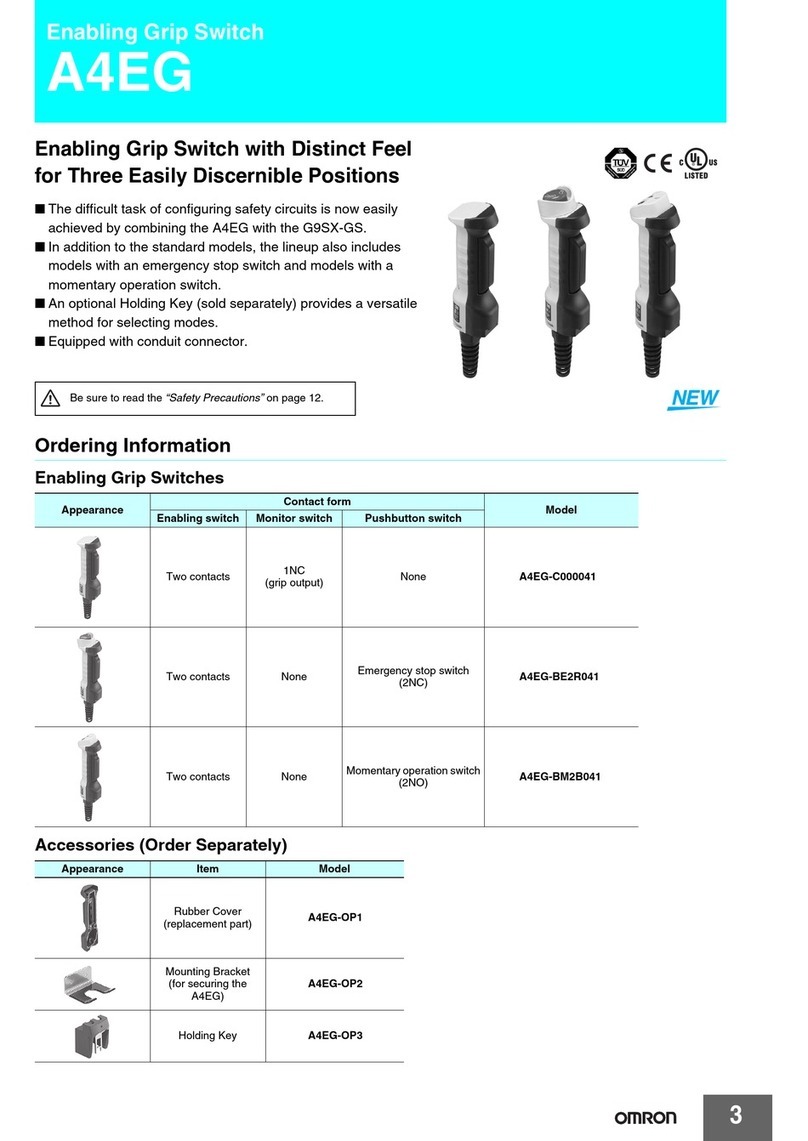
A22TK
6
Accessories
Note: For information on two-hole and three-hole control boxes, contact your OMRON representative.
The Switch Block, Mounting Latch, Connector, and Lock Plate of A22E can be used.
Appearance Key release
position Key position of NC
contact closing Contact Configuration Key
availability Model
SPST-NC
Yes
A22TK-2LL-01-K01-SJ
SPST-NO/SPST-NC A22TK-2LL-11-K01-SJ
DPST-NC A22TK-2LL-02-K01-SJ
DPST-NC + SPST-NO A22TK-2LL-12-K01-SJ
DPST-NO + SPST-NC A22TK-2LL-21-K01-SJ
TPST-NC A22TK-2LL-03-K01-SJ
SPST-NC A22TK-2RL-01-K01-SJ
SPST-NO/SPST-NC A22TK-2RL-11-K01-SJ
DPST-NC A22TK-2RL-02-K01-SJ
DPST-NC + SPST-NO A22TK-2RL-12-K01-SJ
DPST-NO + SPST-NC A22TK-2RL-21-K01-SJ
TPST-NC A22TK-2RL-03-K01-SJ
SPST-NC A22TK-2LR-01-K01-SJ
SPST-NO/SPST-NC A22TK-2LR-11-K01-SJ
DPST-NC A22TK-2LR-02-K01-SJ
DPST-NC + SPST-NO A22TK-2LR-12-K01-SJ
DPST-NO + SPST-NC A22TK-2LR-21-K01-SJ
TPST-NC A22TK-2LR-03-K01-SJ
SPST-NC A22TK-2RR-01-K01-SJ
SPST-NO/SPST-NC A22TK-2RR-11-K01-SJ
DPST-NC A22TK-2RR-02-K01-SJ
DPST-NC + SPST-NO A22TK-2RR-12-K01-SJ
DPST-NO + SPST-NC A22TK-2RR-21-K01-SJ
TPST-NC A22TK-2RR-03-K01-SJ
SPST-NC
No
A22TK-2LL-01-01-SJ
SPST-NO/SPST-NC A22TK-2LL-11-01-SJ
DPST-NC A22TK-2LL-02-01-SJ
DPST-NC + SPST-NO A22TK-2LL-12-01-SJ
DPST-NO + SPST-NC A22TK-2LL-21-01-SJ
TPST-NC A22TK-2LL-03-01-SJ
SPST-NC A22TK-2RL-01-01-SJ
SPST-NO/SPST-NC A22TK-2RL-11-01-SJ
DPST-NC A22TK-2RL-02-01-SJ
DPST-NC + SPST-NO A22TK-2RL-12-01-SJ
DPST-NO + SPST-NC A22TK-2RL-21-01-SJ
TPST-NC A22TK-2RL-03-01-SJ
SPST-NC A22TK-2LR-01-01-SJ
SPST-NO/SPST-NC A22TK-2LR-11-01-SJ
DPST-NC A22TK-2LR-02-01-SJ
DPST-NC + SPST-NO A22TK-2LR-12-01-SJ
DPST-NO + SPST-NC A22TK-2LR-21-01-SJ
TPST-NC A22TK-2LR-03-01-SJ
SPST-NC A22TK-2RR-01-01-SJ
SPST-NO/SPST-NC A22TK-2RR-11-01-SJ
DPST-NC A22TK-2RR-02-01-SJ
DPST-NC + SPST-NO A22TK-2RR-12-01-SJ
DPST-NO + SPST-NC A22TK-2RR-21-01-SJ
TPST-NC A22TK-2RR-03-01-SJ
Name Appearance Classification Model Remarks
Control Box One hole, yellow box
(for emergency stop) A22Z-B101Y Material: Polycarbonate resin

